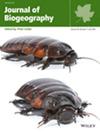Invisible Hand of Sampling for Management: Underlying Needs to Survey a Threatened Seabird Can Bias Aggregated Data
Abstract
Aim
Surveying for a species of concern ahead of proposed activities that alter its habitat is routine practice in conservation and management. Such surveys may accumulate large datasets that could further elucidate trends in abundance and distribution. However, the as-needed surveying of proposed activities may impart a sample site selection bias on the data if used for another purpose. Management of a threatened, forest-nesting seabird offered an example of this. Here we assessed how resource management planning and survey requirements can bias clearance monitoring survey data collected prior to proposed timber harvests, if those data are used for other purposes.
Location
Oregon and Washington, USA.
Taxon
Marbled Murrelet (Brachyramphus marmoratus).
Methods
To assess how timber planning and other factors influenced marbled murrelet survey location selection, we used logistic regression models to examine habitat associations of marbled murrelet survey sites (n = 9178) encompassing proposed timber harvests, and the survey stations (n = 38,923) therein, across the murrelet's inland range in Washington and Oregon, USA between 1989 and 2021. We then simulated the effect this selective sampling might have on assessments of occupancy trends.
Results
Most habitat characteristics considered did influence where surveys were located, with distance to roads often being the strongest predictor of survey location. The strength of selection for each covariate changed over time, such that a habitat characteristic strongly influenced location selection in a year but was less influential in another year. The simulation analysis suggested that the non-random selection of survey sites could profoundly bias assessments of occupancy trends.
Conclusions
When using these clearance monitoring survey data– or any data–beyond their original purpose, careful consideration should be given to the scope of inference provided and analytical methods used, to ensure that observed trends are the product of biological processes and not biased by sampling artefacts.

 求助内容:
求助内容: 应助结果提醒方式:
应助结果提醒方式:


